September is National Recovery Month & National Suicide Prevention Month
This past week began National Recovery Month and National Suicide Prevention Month, which are intended to educate Americans about services, treatment, and resources available to those with mental health and substance use disorders and to promote suicide prevention.
Elinore McCance-Katz, M.D., Ph.D, assistant secretary for mental health and substance use at the Substance Abuse and Mental Health Services Administration (SAMHSA), helped kick off the month-long observances in a video message celebrating those in recovery and the recovery community’s work in the fight against addiction in the United States.
SAMHSA will host a webinar series throughout Recovery Month that will feature a different topic every Thursday. Upcoming topics include supported employment, communities supporting recovery, and the importance of integrating recovery support services.
Meanwhile, the National Action Alliance (Action Alliance) for Suicide Prevention has developed several resources to help build awareness about suicide prevention. Please see the Action Alliance’s #BeThere activities and use the hashtag #BeThere to educate your organization’s social media followers.
In addition, the group will host National AI/AN Hope for Life Day on Sept. 10. That event falls during Suicide Prevention Week from Sept. 6-12. Please see the Hope for Life Day toolkit and visit the Action Alliance’s #BeThere webpage for more information.
And please remember to follow NABH on Twitter and LinkedIn to learn what NABH members, federal agencies, and other organizations are doing to honor National Recovery Month and National Suicide Prevention Month.
AHRQ Seeks Comment on Strategies for Opioid Use and Misuse in Older Adults in Primary Care
The Agency for Healthcare Research and Quality (AHRQ) is working on a project to assess and describe the current prevalence, awareness, and management of opioid use, misuse, and abuse in older adults and identify gaps and areas of needed research.
The new project will support primary care practices in both developing and testing innovative strategies, approaches, and/or tools for opioid management within learning collaboratives and will culminate in a “Compendium of Strategies” for opioid management in older adults in primary care settings.
AHRQ mapped out its data collection method in the agency’s project description and is seeking public comments about that process. The notice was posted on Aug. 26, and AHRQ will accept comments for 30 days after that publication date.
Anthem-Affiliated Health Plans More than Doubled the Number of Consumers Receiving Whole-Person Treatment for OUD
After committing four years ago that it would ensure more consumers would receive both drug therapy and counseling treatment, health insurer Anthem announced this week that it increased the combined percentage of consumers in employer-based, individual, and Medicaid plans with opioid use disorder (OUD) to 36% from 18% in 26 plans nationwide.
The Indianapolis-based insurer released the announcement at the start of National Recovery Month and added that Medicaid plans alone increased to 55% from 24%.
Greg Williams, a national recovery advocate who helped launch the Surgeon General’s report Facing Addiction in America and who co-founded The Alliance for Addiction Payment reform, applauded Anthem for its efforts and said it’s more important than ever for health insurers to take on this leadership role.
“Medication for certain substance use disorders has the potential to save lives, but medication alone is not a panacea for long-term outcomes,” Williams said in a news release from Anthem. “The best way to promote sustained recovery is to combine the use of medication in treatment with evidence-based behavioral therapies and recovery support services.”
Click here to read Anthem’s Sept. 2 announcement.
JAMA Article Examines OUD Therapies in Residential Treatment Programs
A new article in JAMA explores the findings of research that investigated the OUD treatment that the nation’s residential treatment programs offer.
Published Aug. 25, the research letter notes that residential treatment programs are “a common, costly setting for treating opioid use disorder and are frequently promoted in policy proposals to improve access to care.” But concerns have arisen about the quality of care and a low use of evidence-based opioid agonist treatment in these settings.
Because data on these programs are based primarily on self-reported surveys, the researchers simulated patients calls to audit the treatments that these programs offer. Click here to read the research letter.
Georgetown Offers New Master’s Program in Addiction Policy and Practice
Georgetown University is offering a new master’s program in addiction policy and practice that is intended to build a national policy workforce that will respond to the chronic health condition of addiction.
The program will draw from the faculty and resources of the university’s schools, including the Graduate School of Arts and Science, the O’Neill Institute for National and Global Health Law at Georgetown University Law Center, Georgetown University Medical Center, the McCourt School of Public Policy, and the basic and social science departments of Georgetown College.
Applications for the one-year program will open this fall and the first class is scheduled to begin in July 2021. Click here to learn more.
Fact of the Week
A prevalence of depression symptoms in the United States was more than three-fold higher during Covid-19 compared with before the pandemic.

